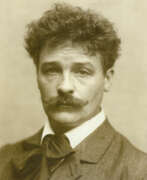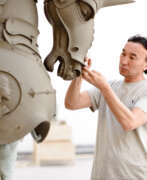Jewelers 20th century


Johan Victor Aarne, born Lindström in Sweden, was a Finnish jeweller who collaborated with the Fabergé firm and was a supplier to the Imperial Court.
Aarne was educated in the art of jewellery by the renowned jeweller Johan Erik Hellsten. He worked in the workshop of August Holmström, included in the Fabergé firm, before opening his own workshop. In 1891 he moved to St. Petersburg, where he worked directly for Fabergé. In 1904, he sold the workshop and moved to Vyborg, continuing to work successfully in the jewellery business.


Helen Ashbee is a British artist, sculptor and jeweller. Daughter of renowned architect, designer and social reformer Charles Robert Ashbee.
Helen Ashbee was a textile designer and after the death of her husband, Italian painter Francesco Cristofanetti, she finds her real business in Paris - 'abstract sculpture' and related jewellery, for which she always did many preparatory drawings.


Edgar Augustin was a German painter and sculptor.
Augustin studied sculpture in Münster with Karl Ehlers, then was a pupil of the master Gustav Zeitz in Hamburg. His oeuvre includes partly abstract figurative representations in bronze, wood and plaster as well as paintings, drawings and graphics. Some of Edgar Augustine's sculptures are located in public spaces in Hamburg and other cities.
Edgar Augustin was a member of the Free Academy of Arts in Hamburg and the Special Association of Artists in Germany. In the second half of the 20th century, Augustin was one of the pioneers of figurative wood sculpture and is considered its most important representative.


Mirko Basaldella is an Italian and American sculptor and artist.
Born into a creative family, he displayed his talent from a young age and participated in the Italian Biennale. In 1957 Basaldella moved to Cambridge, Massachusetts, and was elected a Fellow of the American Academy of Arts and Sciences in 1962.


Friedrich Becker was a German artist, jeweler, and inventor of kinetic jewelry.
Friedrich Becker is one of the most influential jewelers of the second half of the twentieth century. He became known primarily for his avant-garde projects of kinetic jewelry and large kinetic objects.
Becker was interested in kinetics, the interaction of force and motion already during his apprenticeship years. He first trained as a mechanical engineer, then joined the aviation department. Only after World War II did he "make the reckless decision to become a jeweler." After training as a jeweler, he studied at the Werkkunstschule and then founded his own workshop in Düsseldorf, becoming a professor at the Düsseldorf University of Applied Sciences.
Becker experimented and supplemented various jewelry pieces with interchangeable stones and eventually developed kinetic jewelry. He was not only the inventor of kinetic jewelry, but also revolutionized the jewelry market with the introduction of stainless steel and synthetic gemstones. Each kinetic piece by Friedrich Becker is a perfect symbiosis of form, color and material.


Suzanne Belperron was an influential 20th-century jewellery designer based in Paris. She worked for the Boivin and Herz jewellery houses before the outbreak of World War II. Subsequently, she took over the Herz company, renaming it Herz-Belperron. Belperron had many important client, from royalty, arts and show business on both sides of the Atlantic.


Gerald Adrian Sallis Benney was a British silver and goldsmith who along with David Mellor and Robert Welch popularised stainless steel designs in post-war British homes. Like Mellor and Welch he was influenced by modern Scandinavian design and in particular Georg Jensen.


Jules René Boivin was a French jeweller, born in Paris in 1864. He began his career as a jeweller as an apprentice to his brother Victor, and soon excelled in creating small boxes and inlaid metalwork. His talent was not limited to craftsmanship - he had a unique sense of design and excelled at drawing on both paper and metal.
In 1890, Boivin decided to set up his own business and acquired several workshops. He became in demand with jewellery houses but also worked with private clients, creating unusual jewellery inspired by nature, from real animals to mythological creatures. In 1900 he moved to new premises and began trading in antique jewellery. Sadly, his life was cut short at the front in 1917 when he was just 53 years old.


Pol Bury was a Belgian sculptor and artist, celebrated for integrating movement into his sculptures and pioneering the kinetic art movement. Born on April 26, 1922, Bury began as a painter in the Jeune Peintre Belge and the COBRA groups, later transitioning to sculpture. His most renowned work, the fountain-sculpture 'L'Octagon', is a highlight in San Francisco. His innovative art was acknowledged when his work was auctioned at Christie's in 2008, recognizing the unique nature of his contributions to art.
Pol Bury's creations can be found in permanent collections, like that of the Chelsea Art Museum, amongst others.
.


René Carcan was a Belgian painter, engraver, sculptor and jeweler.
He studied sculpture at the Academy of Saint-Josse-Ten-Nod and then painting at the Brussels Academy.
Carcan developed an artistic style that has been compared to Henri Matisse, and the frescoes of Tuscany and Etruria became one of his main sources of inspiration. Carcan was a prolific and polymorphous artist, always eager to experiment. In addition to his work in printmaking, he enjoyed sculpture and jewelry making.




Ettore (Ted) DeGrazia was an American Impressionist painter, sculptor, composer, actor, director, designer, architect, jeweller and lithographer.
DeGrazia is known for his colourful depictions of Native American children in the American Southwest and other western scenes. He has been called "the most replicated artist in the world."


Patrick Dupré is a French op-art and kinetic artist.
While working for the aluminum company Pechiney in Paris in 1964, he created his first work "Skyscraper" on aluminum plate using rubber, ink, sharpener, blade and Shabu knife, and in the 1970s he already developed his own technique of etching on aluminum foil. During the same years, Dupre also invented a new method of industrial engraving on silver, gold and metal bowls. He created art prints by hand, engravings on copperplate, gravure prints and etchings on drypoint. Since 2012, Dupre has produced Op-Art jewelry based on his work and lives in the French countryside.


Carl Fabergé (Russian: Карл Гу́ставович Фаберже́) was a 19th- and 20th-century Russian jeweler, entrepreneur, and artist of German descent. He ran a family jewelry company for almost 50 years, which became world-famous for its products - Easter eggs made of precious metals, stones, and enamel.
Carl Fabergé met the Russian Emperor Alexander III at the All-Russian Exhibition in Moscow in 1882, which was a landmark event in the jeweler's career. The emperor ordered an Easter egg from the master for his wife, which the empress loved. From this moment on Fabergé, who became the jeweller to the Court, became responsible for the annual production of Easter eggs for the imperial court. Members of the imperial family also ordered jewelry from Fabergé for their many European relatives. This turned the Fabergé family company into one of the leaders of the world jewelry market.
Fabergé produced not only high-end jewelry products, but also items for the average buyer. In 2005, at Sotheby's in New York, several stone figurines were sold for $850,000 to $1,800,000.


Theodor Fahrner stands out as a pioneering jewelry designer hailing from Pforzheim, Germany. Renowned for his exquisite Art Nouveau and Jugendstil creations, Fahrner's legacy extends beyond his lifetime. His pieces, known for their affordability, became synonymous with impeccable craftsmanship and unique design. Taking the reins of his father's ring factory after his passing in 1883, Fahrner swiftly rose to prominence. By 1895, he was the sole proprietor, venturing into innovative territories by registering patents and utility models during the upheaval leading up to the 20th century. Fahrner's breakthrough moment arrived at the 1900 Paris World Exposition, where his jewelry, designed by Max J. Gradl, earned a prestigious silver medal.
As the years progressed, Fahrner's design prowess flourished. From 1899 to 1906, he primarily undertook design work himself, infusing each piece with his artistic vision. Collaborations with designers such as Maria Obrich, Patriz Huber, and Ludwig Knupper later defined the firm's trajectory. The brand's focus shifted towards affordable yet elegant Art Deco jewelry, solidifying an international reputation. Fahrner's life journey concluded on July 22, 1919, leaving behind a rich heritage and two daughters, Vera and Yella. His legacy endured as jeweler Gustav Braendle acquired the Fahrner brand, passing it on under the name Bijouteriewarenfabrik Gustav Braendle, while the distinctive label "Fahrnerschmuck" continued to grace exquisite creations.


Rei Kawakubo is a Japanese fashion designer based in Tokyo and Paris. She is the founder of Comme des Garçons and Dover Street Market. Although not formally trained as a fashion designer, Kawakubo did study fine arts and literature at Keio University. After graduation she worked in the advertising department at the textile company Asahi Kasei and she went on to work as a freelance stylist in 1967. Two years later, she began to design and make her own clothes under the label Comme des Garçons. In 1969, she established her own company, Comme des Garçons Co. Ltd in Tokyo and opened up her first boutique there in 1975. Starting out with women's clothes, Kawakubo added a men's line in 1978. Three years later, she started presenting her fashion lines in Paris. Comme des Garçons specialises in anti-fashion, austere, sometimes deconstructed garments. Kawakubo likes to have input in all the various aspects of her business, rather than just focusing on clothes and accessories. She is greatly involved in graphic design, advertising, and shop interiors believing that all these things are a part of one vision and are inextricably linked.


May Morris was an English artisan, embroidery designer, jeweller, socialist, and editor. She was the younger daughter of the Pre-Raphaelite artist and designer William Morris and his wife and artists' model, Jane Morris (née Burden).
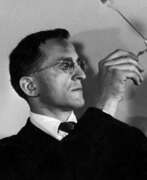

Serge Mouille was a French industrial designer and goldsmith. He is best known for his light fixture designs.
Serge Mouille remains famous primarily for his minimalistic designs and use of uniformly black painted metal materials. His wall-mounted spot light fixture with articulated arms is typical for his discrete, yet highly functional designs.
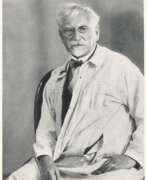

Alfons Maria Mucha, a Czech Art Nouveau painter and decorative artist, was celebrated for his innovative contributions to art, particularly his distinctive style that became synonymous with the Art Nouveau movement. Born in 1860 in the Moravian town of Ivancice, Mucha exhibited artistic talent from a young age, initially showing a proclivity for drawing and music, which were closely intertwined in his perception of creative expression. Despite early financial and educational hurdles, Mucha's passion for art led him to Vienna and subsequently Munich, where he honed his skills and absorbed influences that would shape his future work.
Mucha's career took a pivotal turn in Paris, where his poster for the actress Sarah Bernhardt's play "Gismonda" gained him immediate fame. This partnership with Bernhardt catalyzed a prolific period during which Mucha produced a flurry of artworks, including paintings, posters, and illustrations, as well as designs for jewelry, wallpaper, and theatre sets. His works are characterized by their depiction of beautiful young women in flowing robes, surrounded by lush, natural elements and often featuring pastel colors—a stark contrast to the bold hues preferred by his contemporaries.
Despite his commercial success, Mucha aspired for his art to convey a deeper spiritual message rather than merely adhering to the trendy Art Nouveau style. This led him to undertake projects that were more personal and culturally significant, such as "The Slav Epic"—a series of paintings celebrating Slavic history. Mucha's legacy is not only preserved in his diverse body of work but also in his influence on the aesthetic values of craftsmanship and design.
Collectors and experts in art and antiques continue to venerate Mucha for his unique ability to blend artistic beauty with cultural expression. His works, which are housed in museums and galleries worldwide, remain a testament to his vision and creativity.
For those keen on exploring the world of Alfons Maria Mucha further and staying updated on new sales and auction events related to his work, signing up for updates is an excellent way to ensure you never miss an opportunity to appreciate or acquire pieces related to this iconic artist. This subscription is tailored for collectors and art enthusiasts, focusing solely on new product sales and auction events concerning Mucha's legacy.
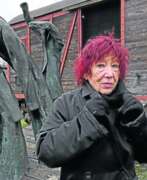

E. R. Nele or Eva Renée Nele Bode is a German sculptor that works goldsmithing and large scale metal sculptures.
Her best-known sculpture is named Die Rampe, a Holocaust memorial dated from 1980. Her latest metal sculpture at large scale is now located at the Dalbergplatz in Frankfurt-Höchst and named Windsbraut.


Peter Philippen (German: Peter Josef Maria Philippen) was a German painter and jeweler.
He studied at the School of Applied Arts in Pforzheim as a jeweler and then at the Düsseldorf Academy of Art. At first he worked as a jeweler, but since 1965 he increasingly turned to painting and experimented with paints of his own making, often with admixtures such as sand.


Feodor Ivanovich Rückert (German: Friedrich Moritz Rückert) was a Russian jeweller of German origin, a master enameller. Rückert was the owner of a Moscow enamel-painting workshop, which produced mainly enamel items on scanning and worked closely with such firms as K. Fabergé, P. Ovchinnikov, O. Kurlyukov, I. Marshak (Kiev) and others.


Rolph Scarlett is an American and Canadian abstraction artist. He designed sets for George Bernard Shaw's play Man and Superman and for Rockettes at Radio City Music Hall, and has painted and designed jewelry. In his artistic work, Scarlett avoided any reference to the outside world and believed that subjectless painting was an act of pure creativity. Personal exhibitions of Rolf Scarlett's works were held in many famous galleries in the United States.


Lev (Léon, Leff) Alexandrovich Schultz was a Russian and French artist, illustrator, jeweller, inventor, philosopher and publicist.
The works of Lev Alexandrovitch Schultz were exhibited dozens of times over a 50 year career and he willingly took part in many exhibitions. From a certain time Shultz exhibited mainly his famous inlays, and in the last decade of his life again his charcoal drawings, pastels and paintings.




Line Vautrin is a French artist, jeweller and designer.
Her work ranges from jewellery to objects such as mirrors, trays and boxes. Devoted to experimentation, she opened A.D.A.M. (Association for the Development of Handmade Arts), a craft school where she taught metalwork and jewellery making and also sold the raw materials she used in her practice.


Henri Vever was one of the most preeminent European jewelers of the early 20th century, operating the family business, Maison Vever, started by his grandfather. Henri was also a collector of a broad range of fine art, including prints, paintings, and books of both European and Asian origin. By the 1880s, Vever became one of the earliest Europeans to formally collect Japanese ukiyo-e woodblock prints.




















































